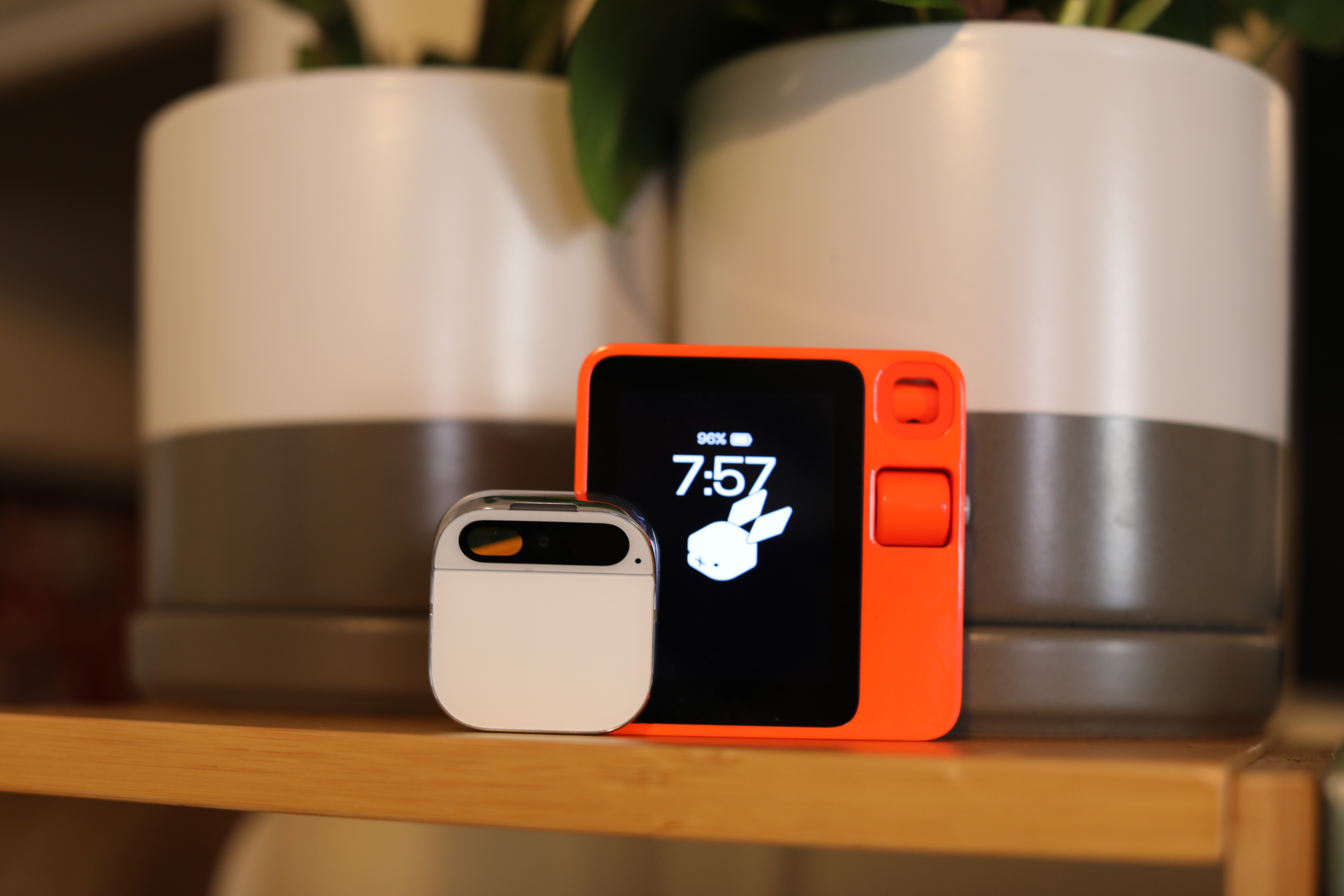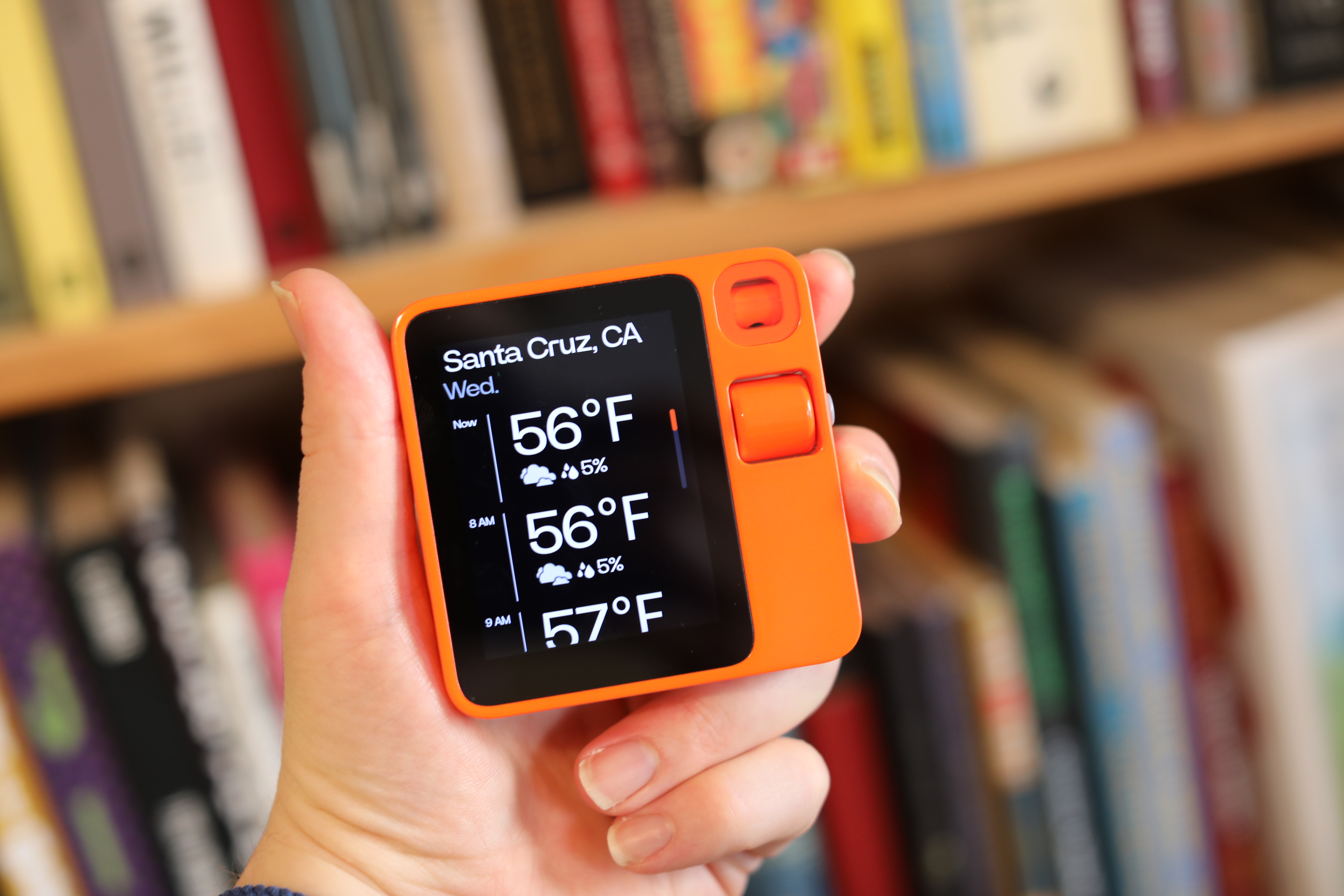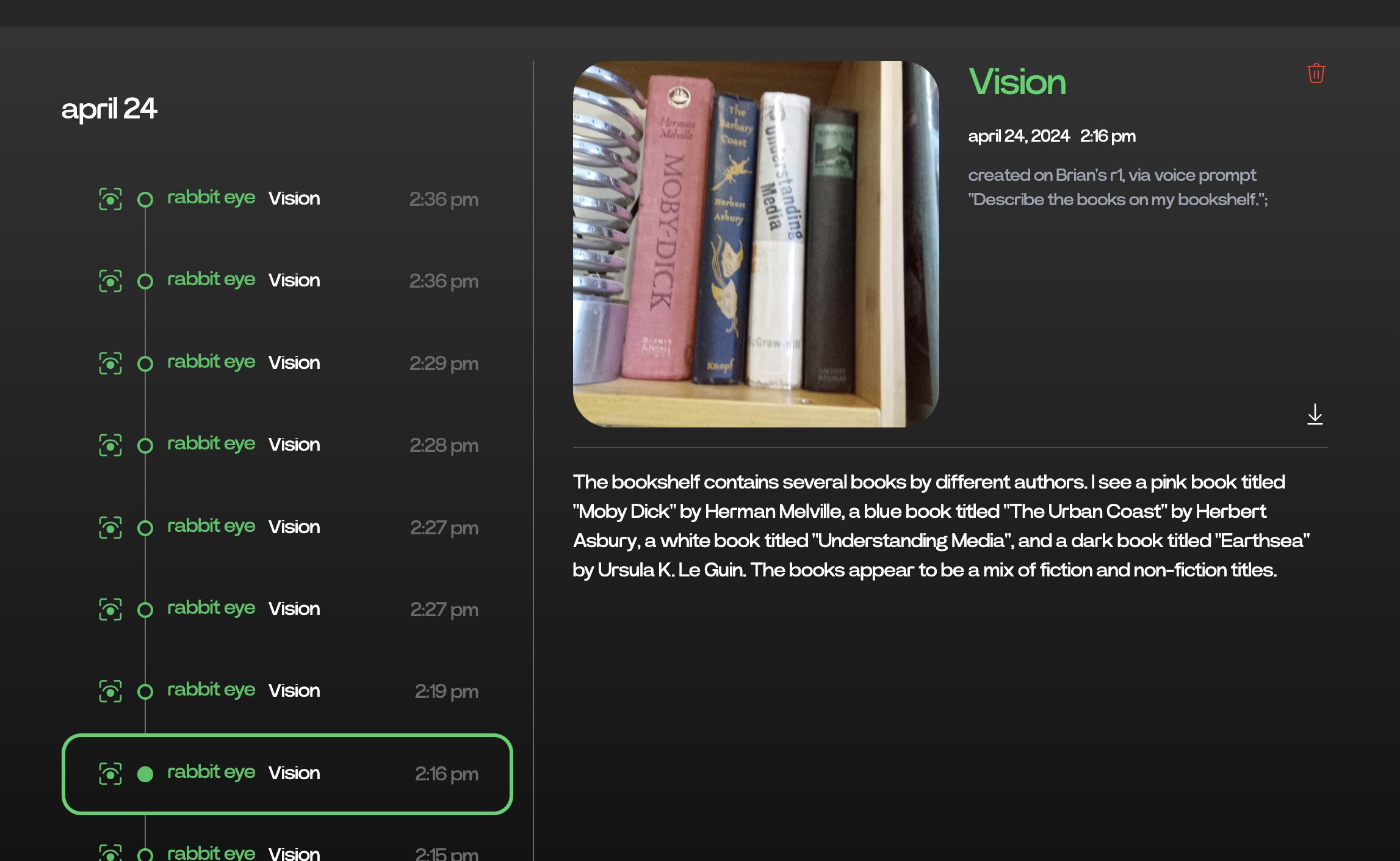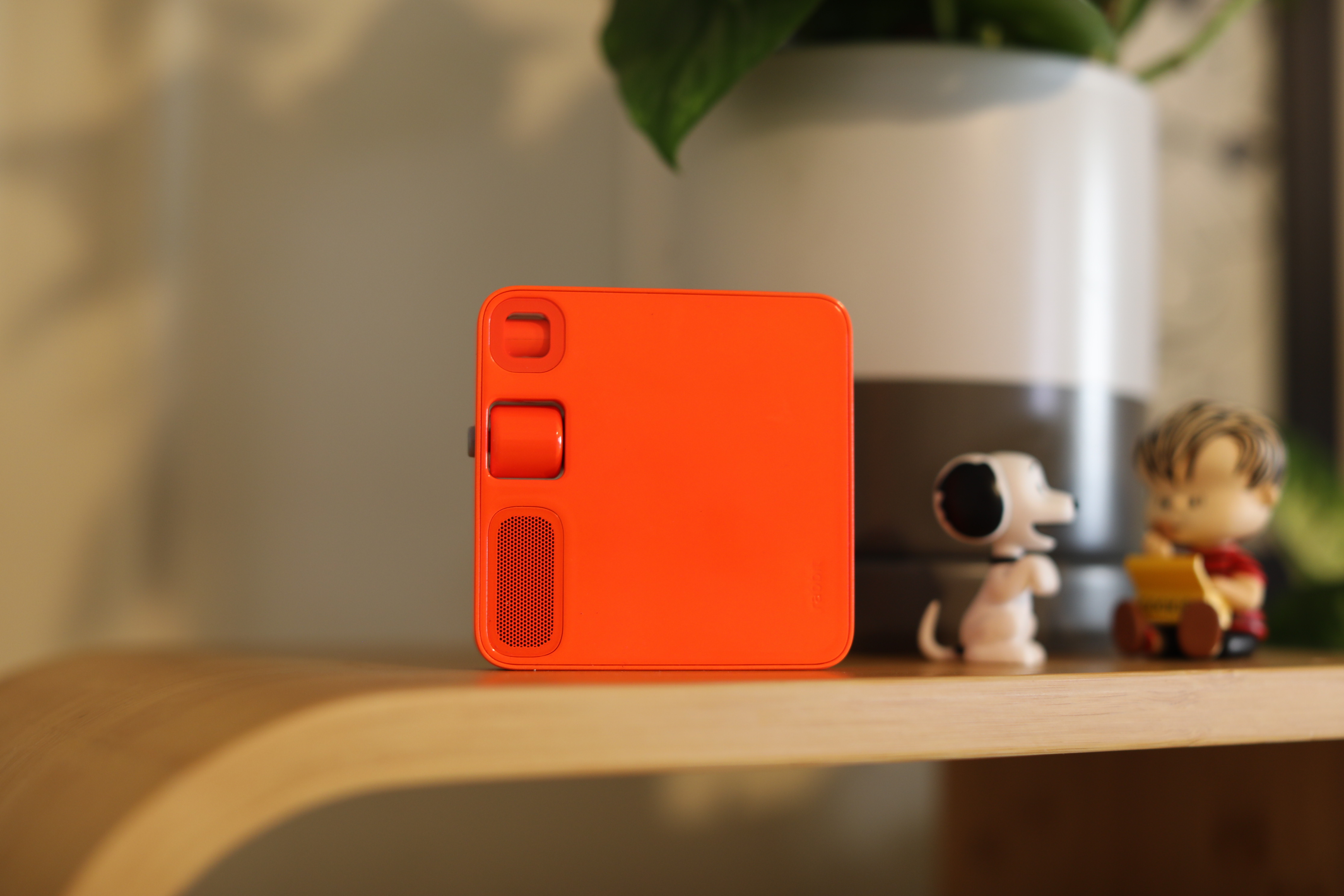
Image credits: Brian Heater
If there’s one overall takeaway from last night’s Rabbit R1 launch event, it’s this: hardware can be fun again. After a decade of undisputed smartphone dominance, there is, once again, excitement in the consumer electronics industry. The wisdom and longevity of each individual product or form factor, while important, can be put aside for a moment. Sit back and enjoy the show.
Despite flying out of one airport on a monthly basis, last night was my first night at the TWA Hotel, nestled among the labyrinthine interchanges of Terminal 5 at JFK. After all, it’s rare to stay in the hotels where you live. The space is an homage to another era, when people dressed up to board flights and smiling chefs carved whole legs of ham.

Image credits: Brian Heater
A rented DeLorean emblazoned with Rabbit branding was parked out front, a postmodern homage to the event’s decades-long embrace of the past. Less noticeable was the Ritchie Valens song sandwiched between Motown hits on the elevator speakers as we descended three floors to the underground event space.
Hundreds of attendees were already lined up when I arrived at the space. Familiar faces from the world of tech journalism reflected, but a sizable number were enthusiastic early adopters. The two groups were distinguished respectively with the “Press” and “VIP” lanyards. A man in line in front of me said he had flown in from Los Angeles specifically for the event.
Like Humane, the Rabbit team is clearly interested in the show. The approaches are similar, but different, with the first investing a good deal of funding into viral videos, including a teaser of the eclipse which clearly envisioned itself as a sort of spiritual successor to the famous “1984” Apple commercial. There’s a sense, however, that Rabbit genuinely didn’t anticipate how much buzz the company’s CES 2024 debut would generate.
“When we started developing r1, we said internally that we would be happy if we sold 500 devices on launch day,” the company said published on X. “In 24 hours, we’ve already beaten him by 20 times!”
It would have been difficult to time the release better. The hype around generative AI had reached a fever pitch. Humane had unveiled but had yet to release its Ai Pin. Intel was declaring 2024 the year of the AI PC, and Samsung would soon do the same for the smartphone. Apple, meanwhile, promised big news on this front in the coming months.

Image credits: Brian Heater
When you put on a big show, a tech company has to dress the part, too. The focus on product design is another key parallel between Rabbit and Humane. Although the form factors are very different, both the Ai Pin and R1 are a testament to the value of industrial design. For his part, Rabbit took a leaf out of the Nothing playbook, hiring stalwarts Teenage Engineering to create a wildly original-looking product. In fact, the R1 looks more like a work of art than anything else. It’s a squat, orange thing, something you might want to mount on the handlebars of your bike in bad weather.
While the Ai Pin’s defining physical feature is its lack of display, the Rabbit embraces the screen, albeit modestly. The display is only 2.88 inches and at times it almost seems secondary to the cause. This goes double for its touch functionality. While, much like Ai Pin, most of your interactions are done with voice, a combination of analog and button scrolling mostly fills in the gaps.
Other than entering a Wi-Fi password, there’s not much reason to touch the screen. It is better that way. The most colossal and ongoing task facing the nascent AI device space is justifying its existence outside of the smartphone. After all, anyone with a fairly decent mobile device (and many not-so-decent ones) has access to generative AI models. At the moment it’s largely accessed via browsers or standalone apps, but models like ChatGPT and Google Gemini will be increasingly integrated into mobile operating systems in the months and years to come.

Image credits: Brian Heater
When I posed the question to Humane, co-founder and CEO Bethany Bongiorno offered the following anecdote: “[Humane’s co-founders] we had gone to this dinner and there was a family sitting next to us. There were three kids, a mom and a dad, and they were always on the phone. It really started a conversation about the incredible tool we created, but also some of the side effects.”
The absence of a screen in the Ai Pin is, in essence, a feature. Again, there are many reasons to question the wisdom and effectiveness of that design decision, but regardless, it’s critical to the product. It’s worth noting that at $199, the price justification barrier is significantly lower than the Ai Pin’s asking price.

Brian Heater
The truth is that, in this initial phase of the first generation, novelty is a huge strong point. You either see the appeal of a dedicated LLM access device or you don’t. Rabbit’s relatively affordable price opens up this world quite a bit. You should also consider that R1 does not require a monthly service fee, while Humane charges you $24 per month for the feature. That, combined with the touchscreen (albeit limited) and truly stellar design, and you can see why the product has taken quite a bit of wind out of the Ai Pin’s sails.
None of the devices trade in apps like modern smartphones do. Interact exclusively with the on-board operating system. However, this can be linked to other accounts, including Spotify, Uber, Midjourney and DoorDash. The system can make voice recordings and perform two-way translations. The system can also acquire environmental context via the on-board camera.
Among the first tests I carried out was to offer a description of my library. I pointed the camera at a row of four hardcovers: “Moby Dick” by Herman Melville; “The Barbary Coast” by Herbert Asbury; “Understanding the Media” by Marshall McLuhan; and “Dodsworth” by Sinclair Lewis. Universally had difficulty with the last book, understandably, as it was the least clear of the bunch.
He largely identified and understood what he saw with “Moby Dick,” calling it a “classic” and sometimes offering a brief synopsis. He recognized the two middle books 50% to 75% of the time. He also attempted to offer context regarding the curatorial choices and sometimes went out of his way to compliment that curation.
There were times, though, when the context was a little too much. I asked R1 when the Oakland A’s are playing (I added the city after an initial request for just the “A’s” came up as “Ace”), and he gave me tonight’s game time, before scrolling through a list of the next 10 or so teams are playing. But hey, I’m a lifelong A’s fan. I like these defeats.

Image credits: Brian Heater
Something worth noting in all of these initial reports is that these types of devices are designed to improve and personalize your results as you use them. I’m writing this after picking up the device just last night. I’ll send it to Devin for a more in-depth article.
Having only played with the R1 for a few hours, I can tell you with certainty that it’s a more accessible device than the Humane Pin, thanks to the touchscreen and price. It doesn’t resolve the screen cultural obsession that Humane is interested in, nor does it feel like it’s shooting for such grandiose ambitions in the first place. Rather, it’s a beautifully designed product that offers a compelling vision of where things could go.